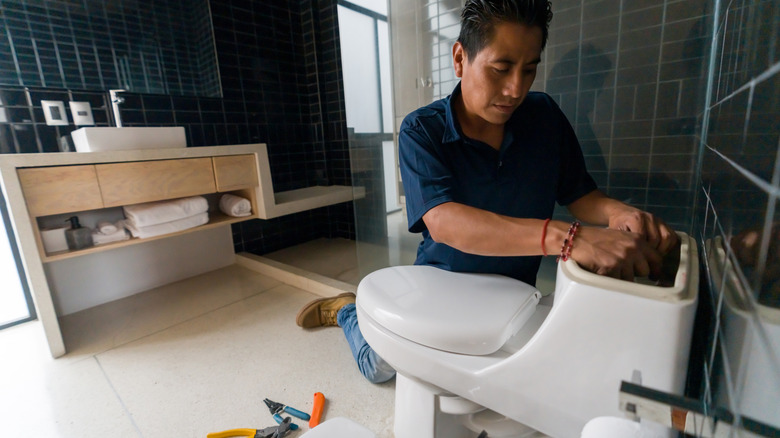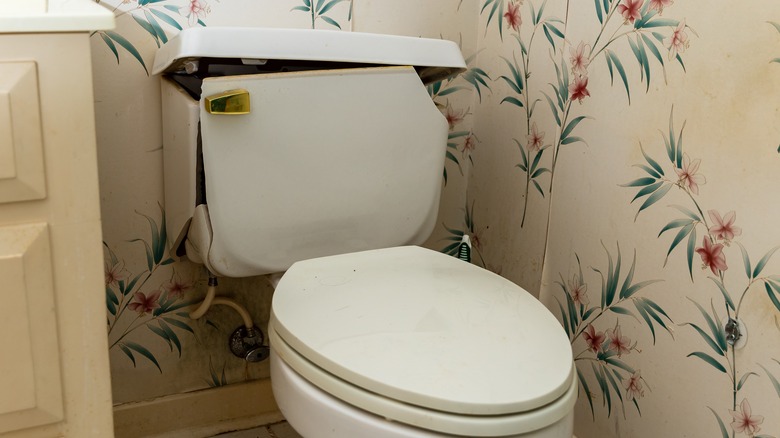Is It Time To Replace Your Toilet? Here's How Long It Should Last For
Considering men and women spend an average of about three years in the bathroom throughout their lives, it's natural to wonder how long your toilet should last. To quench your curiosity, most toilets last between 10-15 years, although they can last up to 50 years if cared for properly. But of course, this is only a guideline. You may or may not know how old your toilet is, but luckily, there's an easy way to find out! If you're looking for your toilet's expiration date (just kidding), look for the stamp inside the tank near the top (not kidding). There will likely be a date of manufacture located there.
But there are other signs it might be time to replace it, and some other reasons you might want to. For example, every time you flush, it may use up to seven gallons of water. That's a lot of wastewater, especially considering that each person flushes about 2,500 times yearly. For this reason, many homeowners switch to a more efficient model before half a century is up. We'll be flushing out this topic today to help you know when to head to the home improvement store for a new loo.
Signs it may be time for a new toilet
There are a few signs to look for that will tell you it may be time for a new toilet — for example, frequent clogs. This is a common issue for antiquated low-flush models. If this happens more than once a week, you might want to replace it with a modern low-flush model that uses even less water but flushes far more effectively. Another potential sign of a problem is cracks or leaks. Do you find puddles of water around the toilet, see cracks in the porcelain bowl or tank, or hear water running when it shouldn't? It may be time to find a replacement if you notice these things or see any visible damage. While fixing a chipped toilet bowl is possible, this DIY task is not appropriate for every homeowner.
Another potential problem can occur with hard water mineral deposits in the siphon tube and inlet holes. This can cause the flow of the water to be interrupted and render the toilet ineffective. While cleaning these deposits out is possible, if your toilet needs frequent repairs and attention, it's probably time for a new one. You might also consider investing in a water softening system to prevent the issue from recurring in your new toilet.
Other reasons to get a new toilet
As previously mentioned, one of the most common reasons to upgrade your toilet is to save money. Toilets with newer technology use far less water than older ones, with new toilets using only one to two gallons per flush. By using less water we waste less and become more environmentally conscious at the same time. Another reason you might want to get a new toilet is for comfort. For example, the seat may be round instead of elongated, and you might prefer the latter. Or, if you have a small bathroom and a large toilet, you might want to downsize to a more compact model.
Lastly, mobility challenges or lifestyle changes may prompt you to look at what's available. Comfort height toilets have a raised seat of 17 to 19 inches instead of the standard 14 to 15 inches. This makes them more comfortable and safe for those with mobility issues. There are also luxury options that offer hands-free flushing, heated seats, self-cleaning technology, LED night lights, and integrated bidets. Your toilet should probably last for a couple of decades before you should have to consider a replacement. However, in the interest of saving water or addressing lifestyle changes, there are many exciting new features to explore.


